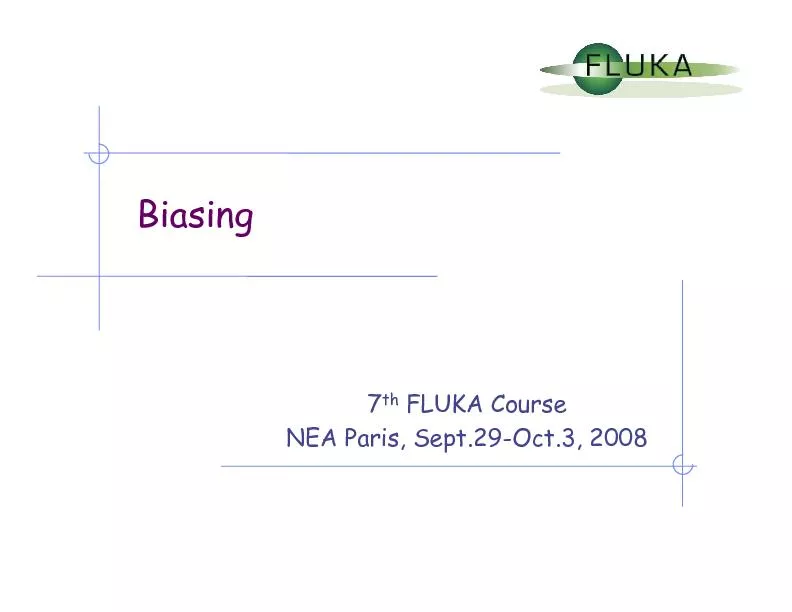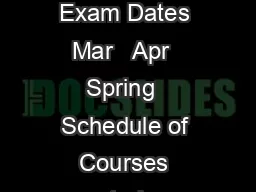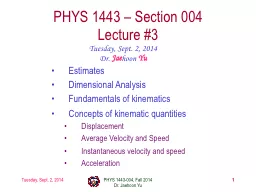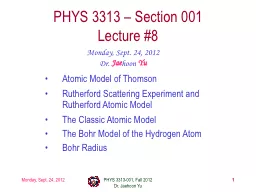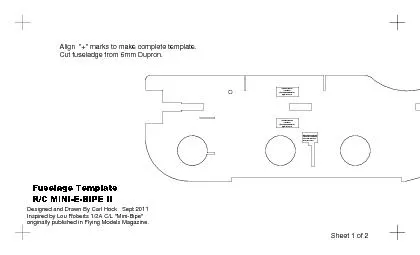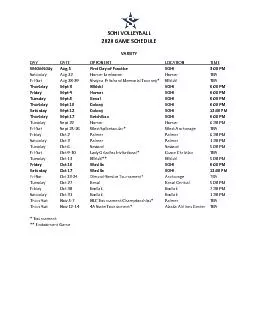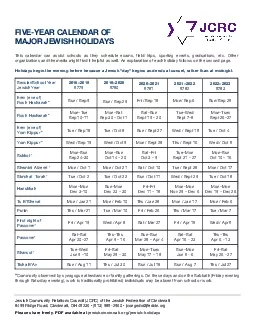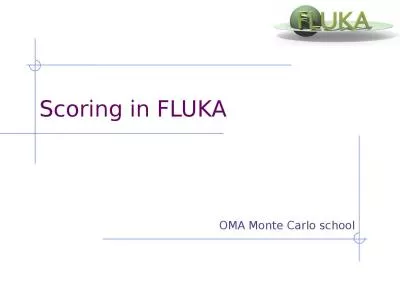PDF-FLUKA Course, Paris Sept.29-Oct.3, 20082
Author : trish-goza | Published Date : 2016-05-14
OverviewGeneral concepts Analog vs biased Monte Carlo calculationBiasing options only the most important common options available in FLUKAImportance biasingMultiplicity
Presentation Embed Code
Download Presentation
Download Presentation The PPT/PDF document "FLUKA Course, Paris Sept.29-Oct.3, 20082" is the property of its rightful owner. Permission is granted to download and print the materials on this website for personal, non-commercial use only, and to display it on your personal computer provided you do not modify the materials and that you retain all copyright notices contained in the materials. By downloading content from our website, you accept the terms of this agreement.
FLUKA Course, Paris Sept.29-Oct.3, 20082: Transcript
Download Rules Of Document
"FLUKA Course, Paris Sept.29-Oct.3, 20082"The content belongs to its owner. You may download and print it for personal use, without modification, and keep all copyright notices. By downloading, you agree to these terms.
Related Documents

